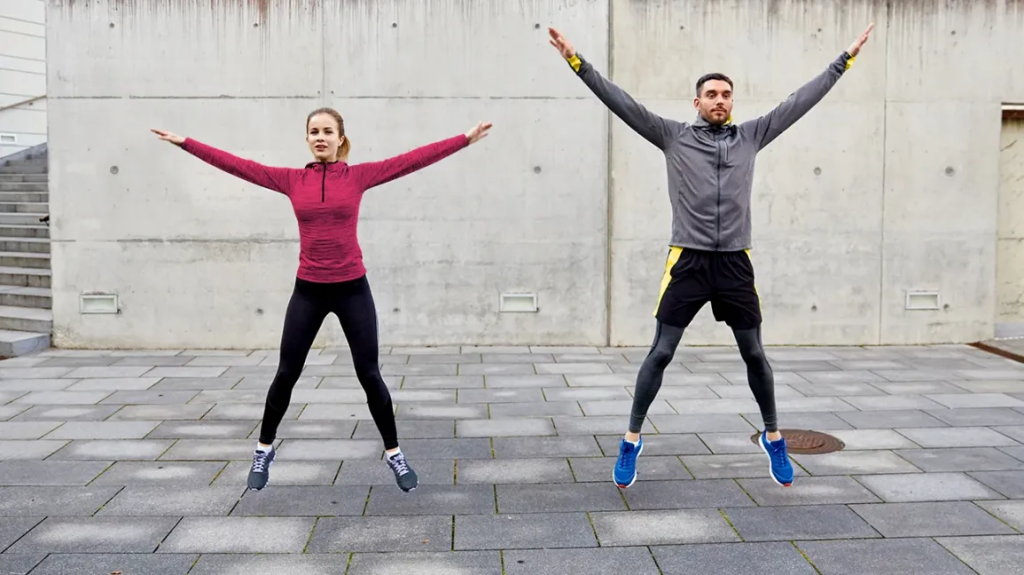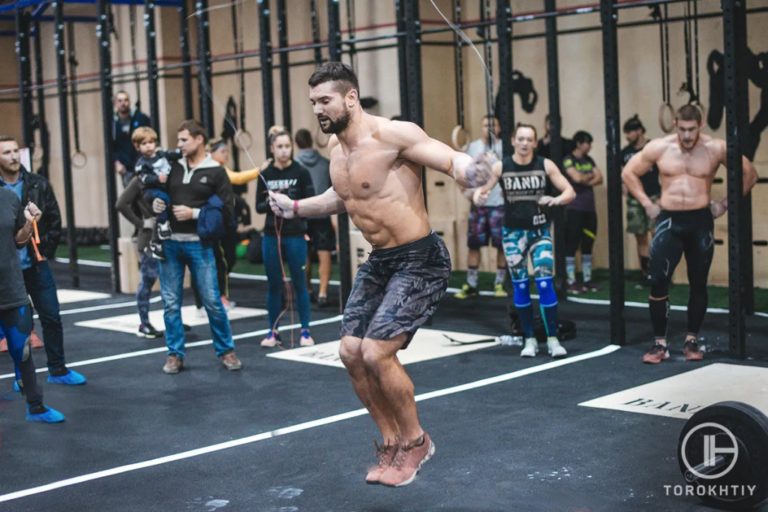HOW TO PERFORM JUMPING JACKS
The jumping jack is a great approach to stimulate all of your body’s key muscles. It is a full-body workout that is commonly utilized in cardio and warm-up sessions. Jumping jacks are a plyometric exercise that incorporates resistance and aerobic training.
It is perfect for both novices and fitness experts due to its simple movements that do not demand much effort. Jumping jack variations include a variety of low-impact and high-impact workouts, allowing you to simply change the intensity of jumping jacks to meet your specific demands.

WHAT ARE JUMPING JACKS?
Jumping jacks work your entire body by focusing on your key muscle groups. It consists of a variety of resistance and aerobic workouts, making it an excellent complement to your cardio sessions.
This workout raises your body temperature and promotes blood flow to vital muscles. Many people warm up their cardiovascular systems with low-impact jumping jacks.
Jumping jacks are a plyometric exercise that strengthens many of your muscles simultaneously. They also help you burn fat and build muscle without using weights.
Jumping jacks are a wonderful strategy to maintain your physical condition.
WHAT MUSCLES DO JUMPING JACKS WORK?
Jumping jacks is an easy-to-do workout that can be done everywhere. It engages all the vital organs of your body, including your lungs, heart, and muscles, all at once. This exercise targets primary and secondary muscles.
Primary muscles include:
Glutes. Also known as gluteus maximus, the glute is your hip’s primary extensor muscle. The gluteus maximus is the outermost and the largest of the other three gluteal muscles. It is a thick and fleshy mass that covers a large area of your hips, giving them a quadrilateral shape.
Hip flexors. These are a group of muscles that join your legs to the trunk. Hip flexors enable you to raise your leg or knee to the torso and bend your torso toward the hip.
Quadriceps. Quadriceps femoris, quads, or quadriceps extensors make a large muscle group consisting of the four major muscles on the thigh’s front. These are the great extensor muscles present in the knee that form a big, fleshy mass. This mass covers some sides and the front part of the femur.
The secondary jumping jacks muscles worked are:
Abs. The abdominal muscles are a pair of two parallel straight muscles. These muscles are separated by a midline connective tissue band, also known as the linea alba.
Hamstrings. This refers to the three posterior thigh muscles that go from your knee to the hip. The hamstrings are usually quite susceptible to injuries during sports or workouts, so you must be cautious while doing jumping jacks.
Shoulders. Jumping jacks also engage your shoulder muscles, especially the anterior and posterior deltoids. The deltoid muscle is responsible for the rounded shape of your shoulders. The anterior deltoid is made up of clavicular muscle fibers that attach to the clavicle. The posterior deltoid muscle is made up of spindle fibers and is connected to bony vertebral projections.
Plyometric training includes all of these muscles through jumping movements.
HOW TO DO JUMPING JACKS
These steps will help you do jumping jacks properly without any injuries:
- Stand in a straight position with your feet together, arms fully extended, hands by your sides, and toes pointed forward. This athletic position is the starting step.
- Next, slightly bend your knee in a rapid movement, jump your feet out to your body’s sides, swing your arms out to either side and raise them above your head. Make sure to do all of these things simultaneously.
- After landing on the ground, reverse the pattern and return to your starting position with arms by your side and feet together.
- Repeat the entire process, performing between 10 to 100 reps for about six sets. Remember to maintain your posture and avoid slouching or twisting your toes outward.
JUMPING JACK ADAPTATIONS
There are jumping jack variations with different intensities and difficulty levels for varying muscle types. Some adaptations include:
- Squat jacks
- Rotational jacks
- Low-impact rotational jacks
- Plank jacks
- Burpees
- Box jumps
Plank jacks, for instance, work wonders for the core, shoulders, and lower body muscles.
Burpees consist of a squat jump and push-up, making them ideal for enhancing endurance and muscle strength.
These types of exercises are also an excellent way to warm up your body and elevate your heartbeat. This neuromuscular warm-up reduces your risk of injuries and enhances performance.
JUMPING JACKS BENEFITS
Cardio and resistance training is beneficial for your entire body. It keeps you in shape and strengthens your muscles and bones. As a result, you stay safe from several health issues. Below are some benefits of jumping jacks:
- Targets the entire body. Jumping jacks work your whole body. This includes shoulders, hearts, lungs, core, hip flexors, and glutes. This plyometric exercise increases metabolism and develops your body mass simultaneously.
- Burns fat. An extensive jumping jacks routine enhances your muscle power and body control. It elevates your heart rate, leading to more calorie burn and fat loss.
- Enhances flexibility. A study found that plyometric exercises make your body more flexible.
- Increases bone density. Jumping jacks, burpees, and jump squats enhance your bone density. Doing around ten to twenty of these exercises daily can boost your bone strength and density. This also helps you prevent bone-related issues, such as osteoporosis and osteoarthritis.
JUMPING JACKS MISTAKES TO AVOID
Jumping jacks don’t require heavy equipment. You can do all common jumping jacks variations at home, but you must avoid some mistakes. These tips will help you avoid significant jumping jack mistakes:
- Warm up your body with a brisk walk.
- Always choose a flat and even surface for all jumping jack variations. Surfaces like rubber or grass absorb shock more effectively than cement or asphalt.
- Wear supportive athletic shoes.
- Choose a favorable speed of repetitions throughout your workout session to prevent overuse injuries.
- Take a break whenever you feel pain.
For best results, resistance and aerobic exercise must be performed with perfect form. Consulting a trainer will assist you in assuming the proper stance and avoiding many knee issues.



